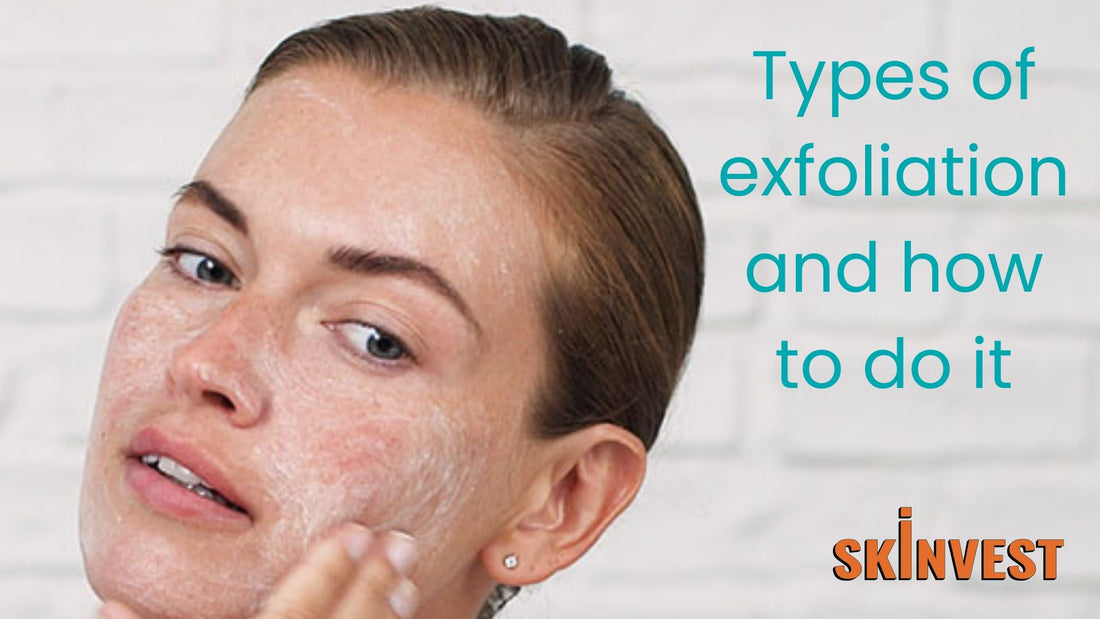
Does that red face of Samantha from SATC pop in your head every time you hear the word ‘exfoliation’? It is hilarious but we sure don’t want you to land in that situation. Here are the basic deets on exfoliation that can keep you from making disasters!
1.What are the types of exfoliation?
Exfoliation, broadly, is of three kinds: Chemical, Enzymatic, and Physical. Everyone has a preference for exfoliation based on the myths they believe in. Let’s break into some myths with facts on the types of exfoliants:
- Chemical exfoliants: These are the ones that can give the highest results if used in higher concentrations. They are categorised as Alpha-Hydroxy Acid (AHA) and Beta-Hydroxy Acid (BHA). AHAs are water soluble and hence cannot penetrate deep within. Examples of AHAs are Glycolic Acid, Lactic Acid, Mandelic Acid, Citric Acid, etc. BHAs are oil soluble and can penetrate your pores to destroy bacterial growth. So those with oily skin can prefer BHA and those with dry or combination skin can pick AHA. It is best to start with the lowest concentration. If used in the lowest concentration and then moving up in the concentration scale, it will not harm your skin or make it sensitive. Chemical exfoliants are not dangerous!
- Enzymatic exfoliants: Enzymatic exfoliation is where you use fruits to eliminate dead skin and gunk. Fruits like Pineapple have Bromelain enzyme which is excellent for mildly exfoliating the skin. Enzyme exfoliation is for the ones who are scared to use chemical exfoliants but are eager to try something with similar or relative efficacy.
- Physical exfoliants: These are the ones with a granular texture that can scrub off dead skin. They are not ideal for those with sensitive or dry skin types. The grains in the exfoliants can irritate your skin if you apply the wrong pressure. These grains could be made up of various materials including walnut particles.
Knowing this is not enough to get started with exfoliants in the right way. Let’s go through the basics of using exfoliants, shall we?
2.Dos and don’ts of exfoliation
- Exfoliate once a week: You don’t need to go overboard with exfoliants and that’s the beauty of it. All you need is once a week at night before sleeping. Doing it frequently can make your skin sensitive so understand your skin and pick a frequency accordingly.
- Start with the gentlest exfoliant: This is especially if you’re using a chemical exfoliant. You can start with the lowest concentration and the mildest form. Once your skin knows the ingredient well, you can increase the concentration. We’d say that you should start with an exfoliating face wash since it has skin contact of only a minute or two. You can then use an exfoliating toner if the face wash works well for you over a while.
- Don’t keep the exfoliant for a long duration: Certain exfoliating masks come with a manual that says it should be used only for 10-15 minutes. And we should follow that. The reason being the brand knows best how the product should be used to get the right results out of it. Keeping on such masks for too long can irritate your skin, and make it prone to damage. etc.
- Don’t exfoliate around thin skin: Our face has thinner skin around the eyes, nose, corner of the lips, and lips. Using exfoliants in such areas can tear the skin easily since it is thin. It is best to avoid exfoliants around such areas. If you want to exfoliate, use an exfoliating face wash in such areas for a minute. Massage it to remove the debris and voila!
If you’re new to the skincare world and the word ‘exfoliation’ has you curling your toes then you must use this as your basic guide to digging deeper into skincare. Remember, your skin is not to experiment with but to be cared for!


